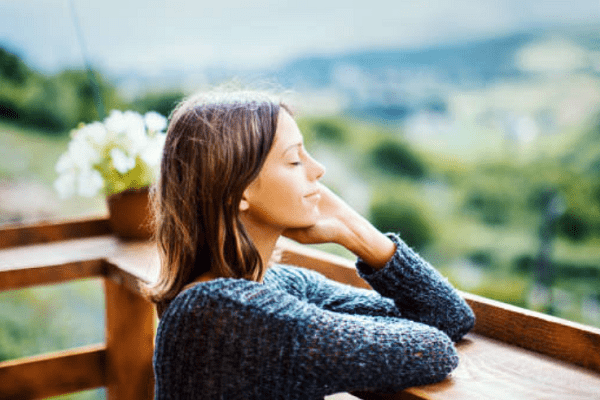Health for a lifetime >>>> Rehabilitation period after respiratory infections
Rehabilitation period after respiratory infections.

Why is the rehabilitation period after respiratory infections as important as the process of treating the disease itself?
Any disease, even insignificant in danger, the human body overcomes with a certain set of efforts. These efforts, or rather the adaptive forces of the body, are designed to use many regulators that the body does not use in a healthy state or does not use to its full potential. A disease, especially an infectious one, urgently requires the release and use of those body resources that are usually used for current health needs in small quantities. Thus, during the illness, the body is forced to quickly exhaust those reserves of useful substances that it accumulated for a long time and spend little by little, as well as to operate in an accelerated mode those functional systems that are designed to work measuredly.
The rehabilitation period is the time that the body needs to restore the spent resources and the processes of repairing damaged tissues, which also require consumables for regeneration. An important role in the viability of the body is played by proteins, fats and carbohydrates, mineral compounds, vitamins and oxygen. These substances are the source of adaptive and reserve forces of the body. The main waste of useful substances during the period of illness falls on the work of such systems as the immune system and the endocrine system, these two systems are responsible for the chemical and biological processes that are involved in protecting the body, and useful substances are spent for their needs.
And the person himself supplies these useful substances to the body. Complete and timely nutrition; a healthy, oxygenated environment; full physical activity - these factors of ensuring the health of the body are violated during the period of illness. And the rehabilitation period is designed to restore good nutrition and a healthy lifestyle, which are usually unbalanced during the illness, no matter how long it is. A disease transferred “on the legs” is even more costly for the resources of the body than a disease with minimal physical exertion and bed rest, since the body has to simultaneously cope with the disease and maintain a high level of physical and intellectual endurance of a person.
After respiratory infections, despite their short duration, the rehabilitation period is necessary to the same extent as after complex traumatic or surgical diseases, since the resources of the immune system, which is responsible for repelling infectious attacks, and the resources of the endocrine system, which is responsible for metabolic processes are at a critically low level.
What is done during the rehabilitation period after respiratory infections? Usually it takes two to four weeks to restore the body's reserves to the required level of health in a correct, that is, thoughtful and reasonable, lifestyle, which involves several areas of rehabilitation:
- restorative nutrition - solves the issues of replenishment of substances, the nutritional value of which is reflected in the full-fledged work of immunity and metabolism;
- hiking in the bosom of nature - normalizes oxygen metabolism, which always suffers when a person is in a confined space for a period of illness, and moves little;
- moderate physical activity - stimulate metabolism and maintain body tone;
- medical restoration of destroyed health.
As a rule in a state of illness, one does not particularly want to eat systematically (which is accompanied by malnutrition), some foods are poorly digested and poorly absorbed, taste preferences change - this is how the body gets sick! It is necessary to establish the type of nutrition that will help restore immunity during the rehabilitation period after an infectious disease: a lot of liquid, a lot of vitamin products, a lot of products that include mineral complexes. During the rehabilitation period, it is appropriate to use these products in an easily digestible form, for example, in the form of mashed potatoes, soups, boiled cereals, in the form of vitamin drinks. This is the time to consume gelled and ground foods.
A lack of oxygen exchange always accompanies a sedentary life, and living in densely populated or industrial areas does not favor a healthy environment in which the percentage of oxygen is low. Restoring oxygen exchange requires an atmosphere with a high concentration of oxygen, and such an atmosphere is present in areas with dense green spaces, which produce oxygen in large quantities. To speed up oxygen exchange, some degree of physical effort is needed that stimulates accelerated breathing, which is achieved by walking - moderate physical effort in a comfortable and pleasant walking environment.
Unfortunately, many respiratory infections undermine the general condition of the body so much that it is necessary to correct the violations obtained during the illness with medical rehabilitation therapy. Infections are dangerous because they introduce an imbalance in the microbiocenosis of the human body, and antimicrobial drugs can destroy not only harmful microorganisms, but also beneficial microflora, which has been developing and maintaining human health for years. It is necessary to restore the population of microorganisms included in the microbiocenosis: to take drugs with the participation of beneficial bacteria , as well as take drugs that reduce populations of harmful fungi - parasites that depress human health.
Many areas of rehabilitation after respiratory infections are corrected by a doctor, but some of them can be used as an independent rehabilitation program.

Read

Read



























